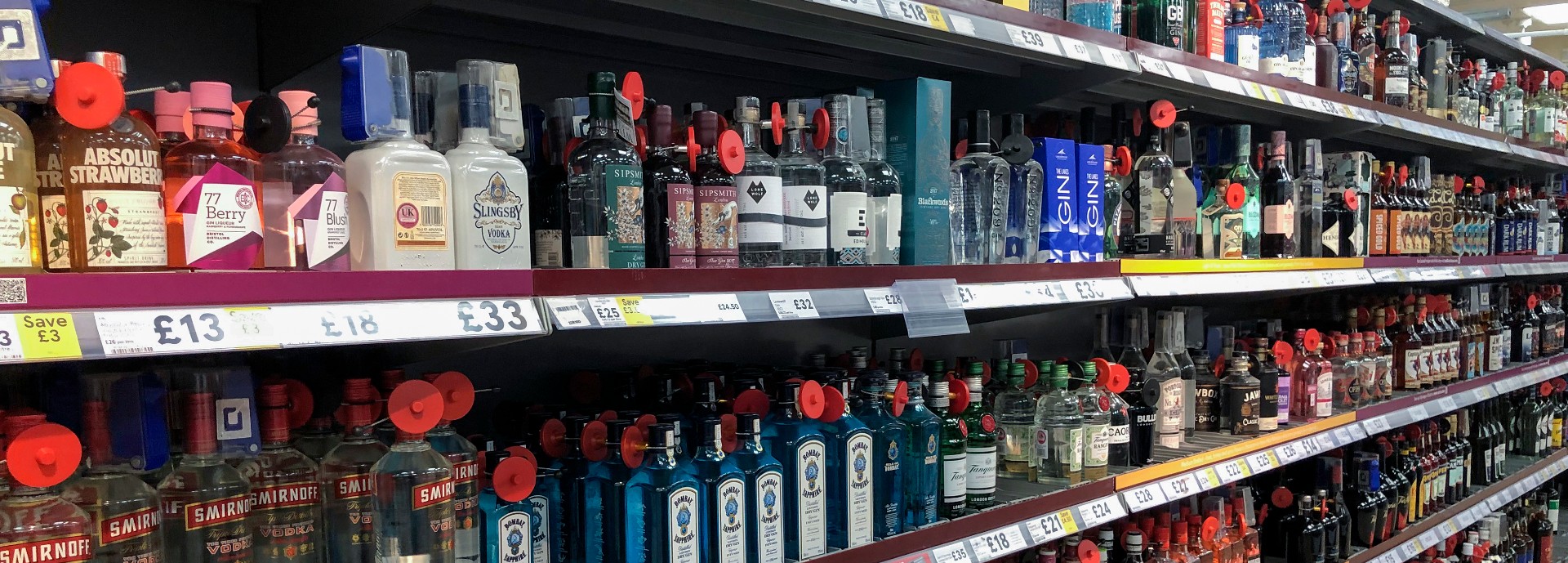Introducing prominent health warnings on alcohol products could be effective in increasing awareness of the potential harms of drinking, according to a new study involving young adult drinkers.
Led by the University of Stirling, the research found that the study participants considered the limited health information currently provided by manufacturers on some alcohol products to have little to no value in shaping or informing consumer decisions.
The study – funded by Alcohol Focus Scotland and published in Addiction Research and Theory – provides an important insight into young adult drinkers’ perceptions of health information, messaging and warnings on packaging, particularly in Scotland.

Institute for Social Marketing and Health
There was a general consensus among the groups that prominent warnings would reduce the appeal of alcohol products, make them less appropriate as gifts, and have a negative effect on socialising and perceptions of drinking as glamorous and fun.
Daniel Jones, of the University’s Institute for Social Marketing and Health (ISMH), led the research. He said: “Alcohol consumption is associated with substantial health, economic and social burdens and is a major contributor to disease, injury and death in Scotland and across the UK, yet public awareness of the health risks is low. As alcohol packaging is usually present when people purchase and drink alcohol, it can be used to inform them of these risks. Our study explored young adult drinkers’ awareness of current health information and messaging on alcohol packaging and their views on alternative, novel warnings.
“Participants did not feel that messaging currently provided voluntarily by manufacturers on alcohol products adequately informs consumers about the potential dangers associated with alcohol use. Most participants thought warnings on alcohol products was a novel concept, despite being accustomed to them on tobacco products. They felt that such warnings could increase consumers’ awareness of the health risks posed by alcohol consumption, particularly for younger or potential drinkers.”
Focus groups
The research team hosted eight focus groups with 50 young adults (18 to 35 years) from across Scotland who had consumed alcohol in the previous month. Participants discussed their knowledge of alcohol-related harms and sources of information, as well as perceptions and use of health information and messaging on current alcohol packaging.
Participants were shown, and discussed, nine alcohol products – vodka, gin and wine bottles – displaying mocked up labels highlighting general or specific alcohol-related health harms. The warnings varied in size (small/large), form (text only/image and text), and content (general/specific). The general warning was ‘Alcohol damages your health’, with an image of a patient in a hospital bed. The two specific warnings were ‘Alcohol increases risk of liver disease’, with an accompanying image of a person clutching their liver, and ‘Alcohol causes cancer’, with an image of a CT scanner.
Mr Jones said: “Our study found that those who supported introducing warnings felt that they should be noticeable, fact-based and relevant to real life. Participants found that large, combined text and image warnings displayed on the front of packaging, and containing specific information, were the most engaging and potentially effective. There was a general consensus among the groups that prominent warnings would reduce the appeal of alcohol products, make them less appropriate as gifts, and have a negative effect on socialising and perceptions of drinking as glamorous and fun.”
Participants were sceptical of alcohol companies’ motivations with respect to health messaging on products, believing that they sought to minimise the amount, saliency and effectiveness of health information and messaging on alcohol packaging. They generally believed the ‘Please drink responsibly’ message was ambiguous and ineffective.
Alison Douglas, chief executive of Alcohol Focus Scotland, said, “This new research demonstrates just how important it is for health and nutritional information to be provided on product labels where it can usefully inform our decisions. Alcohol producers continue to show a complete disregard for our right to know what is in our drinks and what the risks associated with alcohol consumption are. Currently more information is required on a pint of milk than on a bottle of wine and this is unacceptable.
“It is telling that participants reported a lack of trust in alcohol companies to provide health and nutritional information voluntarily. They also noted that, even when some information was provided, it was often small and unnoticeable. Their scepticism of industry is well-founded as previous research found that 70% of labels did not even provide the Chief Medical Officer’s low-risk drinking guidelines. The public want and deserve better and it is clear that the alcohol industry won’t do this willingly. It is time for the Scottish Government to act and use its powers to set out labelling requirements for alcohol products in law.”
The paper, ‘Health information, messaging and warnings on alcohol packaging: a focus group study with young adult drinkers in Scotland’, is co-authored by Dr Crawford Moodie, Dr Richard Purves, Professor Niamh Fitzgerald (all ISMH) and Dr Rachel Crockett (Psychology, Faculty of Natural Sciences at the University of Stirling).

